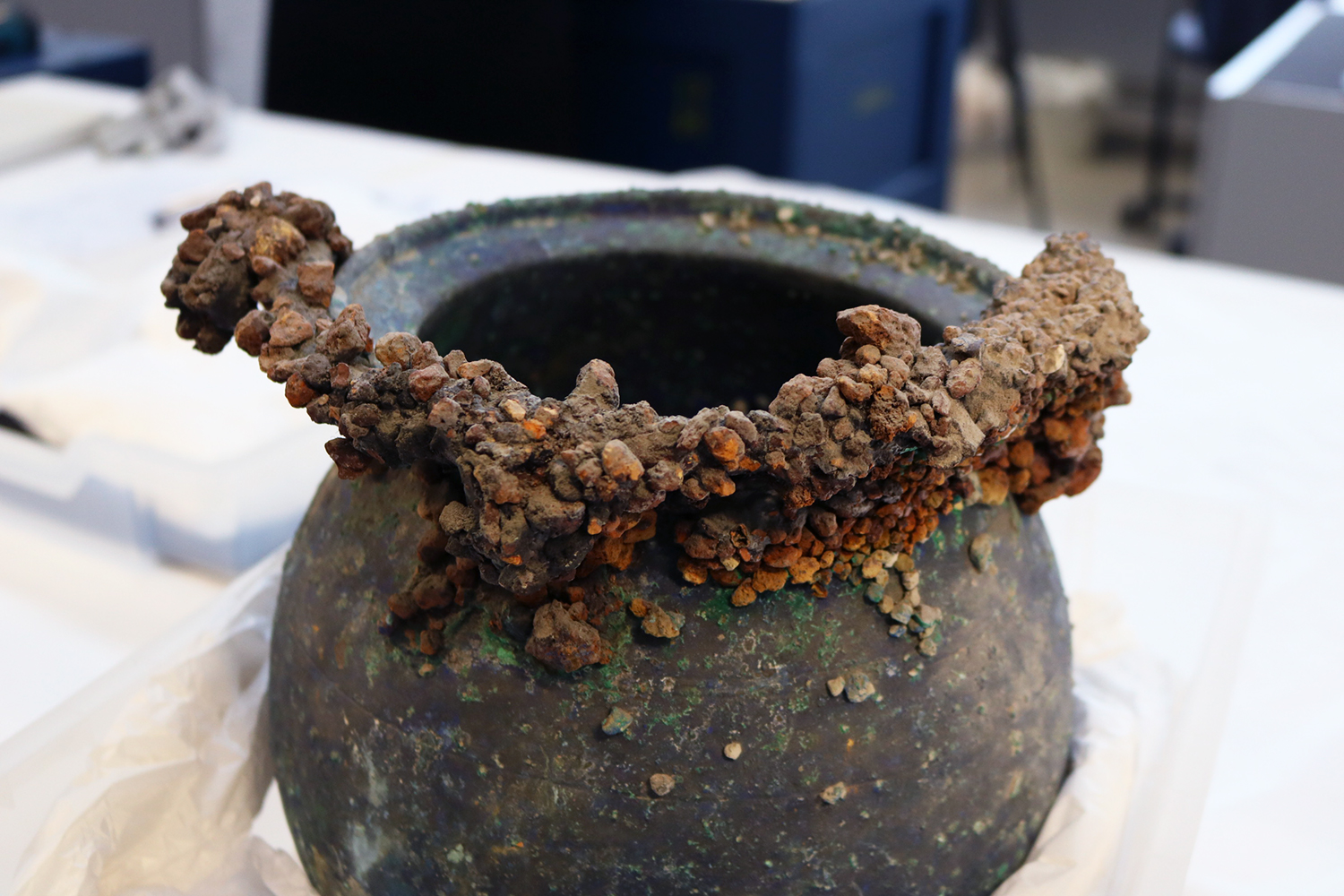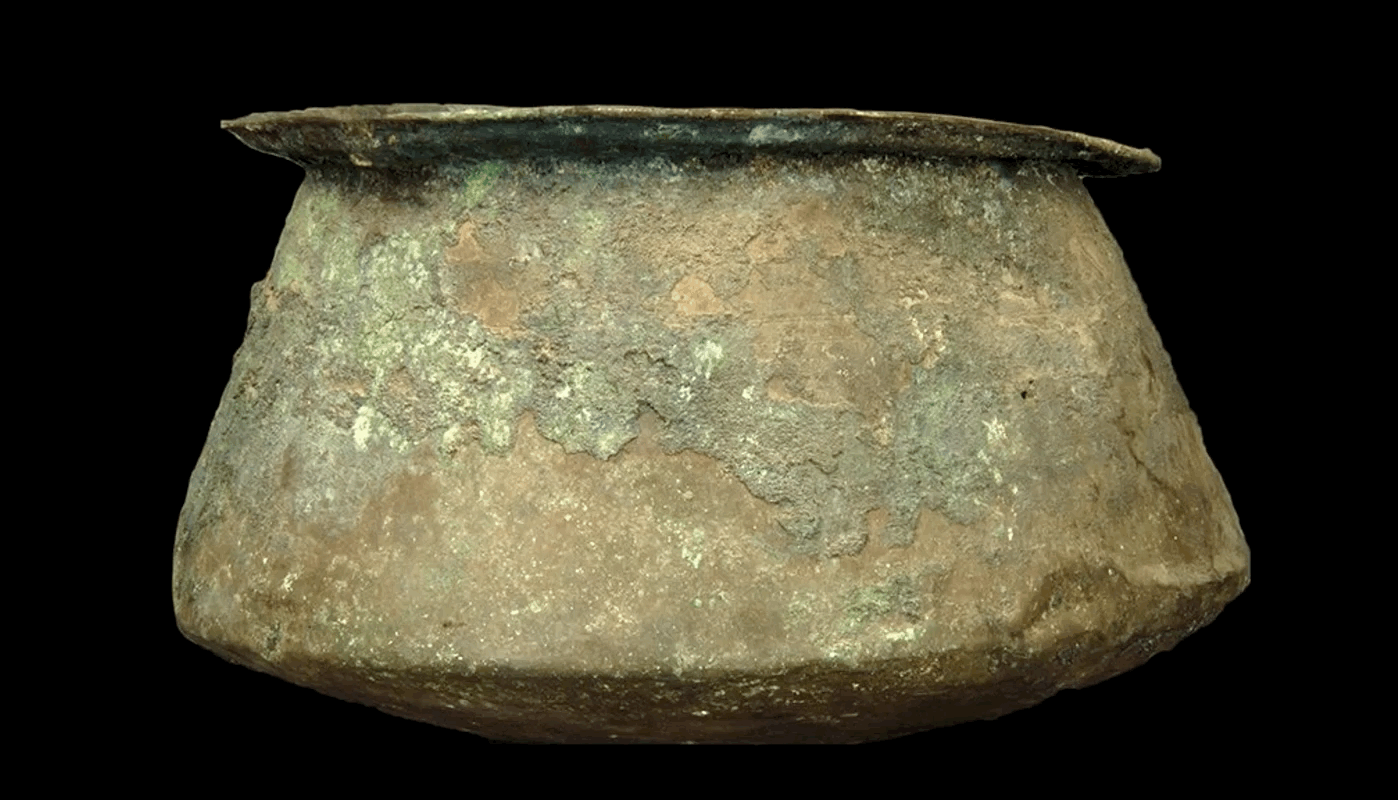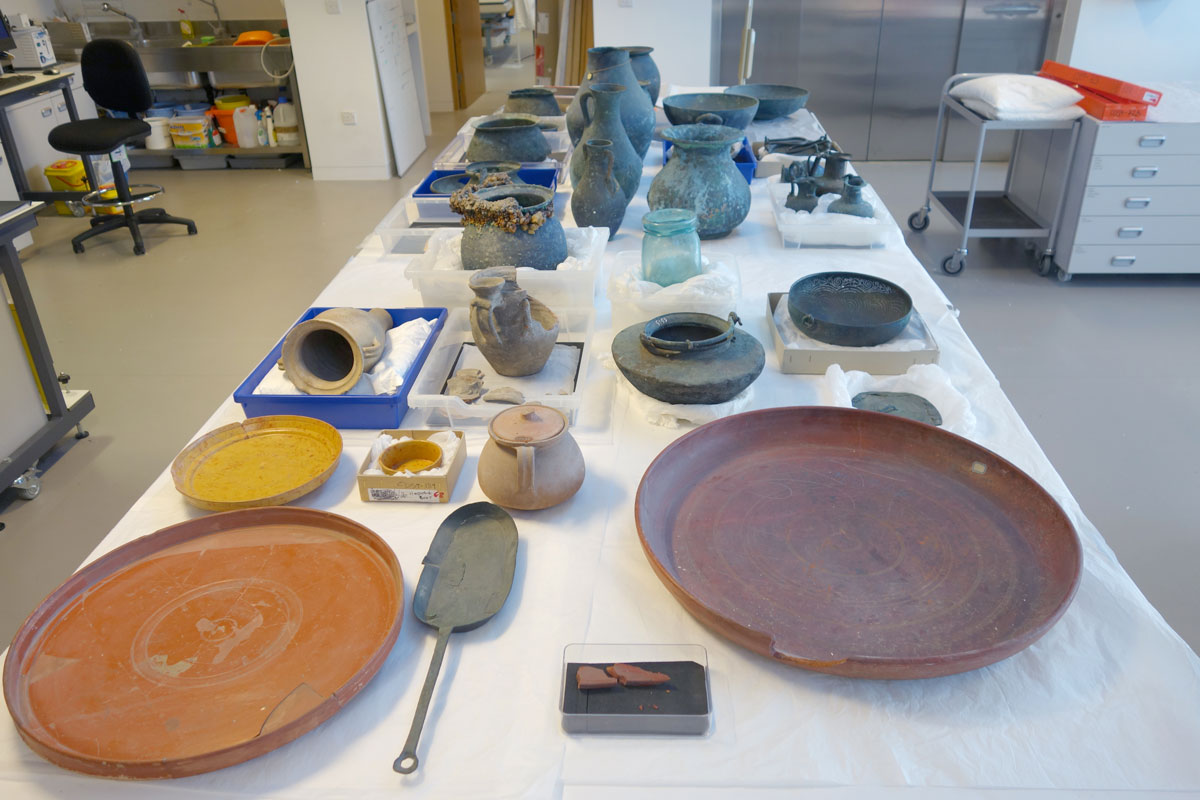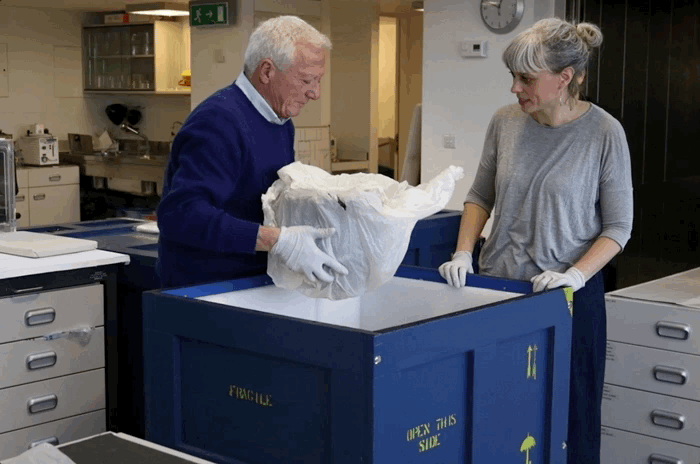CLEANING THE DISHES
9 minute read
By Alexandra Baldwin & Nicky Lobaton
Conservation Manager & Objects Conservator
In the run-up to the opening of the 2019 Last Supper in Pompeii exhibition, Ashmolean object conservators have engaged in a ground-breaking project to conserve 37 extraordinary objects.
The ceramic, glass and copper alloy vessels form a small but important proportion of the total number of objects that have been borrowed from the Roman archaeological site at Pompeii for the exhibition. We are very grateful to the Director General of Pompeii, Professor Massimo Osanna for suggesting and supporting this project.
The objects have never been exhibited before and remain largely in their excavated state, with corrosion and fragments of ash and pumice from the eruption of Mount Vesuvius in AD 79 still encrusted on their surfaces. They include a fascinating group of vessels found in the ruins of a taverna that was first excavated in the 1950s.

Pompeii Jar covered in fragments of ash and pumice from the eruption of Mount Vesuvius in AD 79

A cooking pot from Pompeii. Decorative incised lines, hammer marks from the shaping of the vessel during manufacture and original Roman riveted repairs are all clearly visible in the X-ray
This project has provided unique opportunities for close collaboration with Italian colleagues, as well as the great privilege of working on such exceptional artefacts. Over a 7 month period the Conservation Department at the Ashmolean has formed a special partnership with the staff at the Archaeological Park of Pompeii.
In preparation for the project, Object Conservator Nicky Lobaton visited Pompeii – along with Dr Paul Roberts, the exhibition curator and the Ashmolean's Keeper of the Department of Antiquities, and Ilaria Perzia, assistant exhibition curator and Administrator for the Department of Antiquities. Nicky, Paul and Ilaria were given special access to one of the secure warehouses at Pompeii where many thousands of objects excavated from the ruins of the city are stored on rows of shelves behind closed doors.
A number of objects were selected, to include in the exhibition, which were then photographed and measured, and their condition assessed to help with future decisions about their conservation back in Oxford. The assessment included details such as the type of treatment required for stabilisation and display, as well as an estimate of the time that this would take.
Working on objects that are not from the Ashmolean's collections requires careful discussion and, in this case, formal agreement with the Senior Conservator from Pompeii, Dr Giuseppe Zolfo. It was important to be clear about the techniques and materials that would be used in the conservation treatments, which may differ from the approaches and object aesthetics usually followed in the UK. Nicky was able to visit the conservation facilities in both Pompeii and the Museo Archeologico Nazionale di Napoli where she had helpful and fascinating conversations with the head of the conservation department and the conservators of archaeological material. She was able to discuss methods and treatment techniques, and to gain valuable information about the materials and tools used by Italian conservators. It was an excellent opportunity to visit their laboratories, see conservation work being carried out, and to share the vast knowledge conservators have acquired from working on this unique material.

Some of the 37 vessels from Pompeii, on display in the Conservation Studio at the Ashmolean
The 37 objects arrived at the Ashmolean in December 2018, having travelled with Dr Zolfo who ensured their safety during the two-day lorry journey from Italy. Now at the Ashmolean Museum, the objects could be carefully examined with microscopy, complemented in some instances with X-radiography, and thoroughly documented.
One by one, these objects could be cleaned to remove the layers of corrosion, ash and dirt obscuring decorative surfaces. Cracks and missing areas caused by weakening of the mineralised metal could be repaired to stabilise the objects physically and make them presentable for display. The corrosion layers were also chemically stabilised to reduce the likelihood of further deterioration through corrosion on their return to the salty marine environment of the Bay of Naples.

Ashmolean Conservator Alexandra Baldwin discusses treatments with Italian Conservator Dr Giuseppe Zolfo.
Through studying tool marks, construction details, and original repairs to the objects that are being uncovered during cleaning, new information about how the vessels were made and used has been revealed. We now know, from the presence of residues, that many of the objects were used for cooking. Some vessels still retain soot from the hearth on the underside of the base, and thick accumulation of limescale on the interior of two vessels reveals that they were used as kettles for heating water. Through careful examination by our expert conservators, this evidence is being revealed for the first time in nearly 2,000 years.
This very important collaborative project has established a close professional relationship that did not previously exist between institutions, and is opening up wider international dialogue. The project is also enabling a collection of objects, which would not otherwise have been conserved, to be freed from corrosion products and viewed in a new light.
The 37 objects will be put on display where they can once more be appreciated for their utility and beauty – as they were before the eruption of AD 79. You can find out much more about them, and about food and feasting in Pompeii, in the Ashmolean's Last Supper in Pompeii exhibition and accompanying catalogue.
The conservation work carried out during the course of this project was generously supported by the Stockman Family Foundation and The Helen Roll Charity
Our sincere thanks go to the Parco Archeologico di Pompei and to the Museo Archeologico Nazionale di Napoli.
We are very grateful to the Director General of Pompeii, Professor Massimo Osanna for suggesting and supporting this project.




